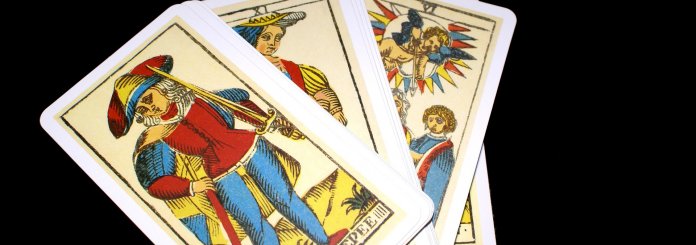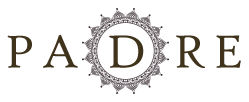What is a Tarot Card reading?

Learning to perform your own Tarot reading can seem like a bit of a challenge. In truth, the process itself is actually relatively straight forward once you get the hang of it. The most difficult part, and perhaps the aspect that most people are intimidated by, is having to trust your own skills, ability, and intuition when attempting to interpret the meaning of the cards.
We’re going to walk you through the basics and in each step, we’ll explain everything you need to know. We’ll also cover some advice for trusting in your own abilities.
Is online tarot reading accurate?
Before you can learn how to do a tarot reading, there are two very important steps. Firstly, you have to buy yourself a deck of Tarot cards. There are apps and online resources that you can use instead of buying a physical deck, but there’s really nothing better than being able to touch the cards and interact with them on a physical level.
Secondly, you have to familiarize yourself with the deck. Become familiar with every card, learn the basics of their upright and reversed meanings. You don’t need to memorize every single interpretation of every single card prior to carrying out your first Tarot reading, but you need to have a guidebook, online guide, or your own notes handy.
Most Tarot cards will come with some sort of guide or leaflet that explains the absolute basics of each card. Then we can take the first step towards learning how to use Tarot cards.
GET YOUR FREE READING! JUST FILL OUT THIS FORM:
How do I learn to read tarot cards?
Once you’re familiar with the cards, we can begin the Tarot reading itself. Learning how to read Tarot cards isn’t a skill that you can master overnight. It’s important to manage your expectations before you begin. You must have patience, you must practice, and you must be willing to trust your intuition.
For your first few readings, it’s up to you whether you want to practice on yourself or on someone else. Do whichever you feel allows you the most room to improve and grow.
How do you ask a question in Tarot?
The first step of any Tarot reading is to think of what question you’d like to ask. This can be absolutely anything. It could be something vague e.g. ‘what do the next 5 years of my life look like?’ or it could be something more specific e.g. ‘will my current career path lead me to my dream job?’ Don’t feel under any pressure to ask common questions or follow any strict rules. Ask whatever you like, but make sure that you’re ready to face the answers.
Whatever the question is, keep it firmly in your mind. If you’re performing a Tarot reading for someone else, then ask them to focus on the question. It’s important that nothing is interrupting your/their ability to concentrate on discovering the answers to the question they have in mind. Repeat it over and over again until it’s the only thought in your head.
Shuffling the Cards
When you’re learning to read Tarot cards, you might be surprised to hear that shuffling the tarot cards is an incredibly important step. When you shuffle a deck of playing cards, it only serves one purpose: it leaves the cards in a random order so that nobody knows where any specific cards are. There is an element of this when it comes to learning how to use Tarot cards, but it isn’t that simple.
Shuffling does put the cards in a random order, but it also connects your energy with the cards. With your question being the sole focus of your mind, your energy shifts so that the cards can direct you towards answers.
When you select cards, it may seem completely random (and it is, at least as far as your conscious mind is concerned), but you’re actually being guided. So, it’s important that you or the person you’re doing the Tarot reading for touches every single card with the question in mind.
The simplest and most effective shuffle technique involves laying the cards flat on the table and simply mixing them all up. You can use one hand or two but carry on for as long as is necessary to ensure that every card connected to your energy through physical contact.
If you’re reading for someone, it’s important that they do the shuffling. When you’re done, collect the cards up and then lay them out in a row or fan shape so that each card is at least partially visible.
The Spread and the Selection
The card spread that you use for your Tarot reading will determine what each card represents. As you learn how to do a tarot reading effectively, you’ll get a better feel for which spread best suits which questions. We’re going to cover two simple and common spreads today.
The first is the 3-card spread. As you can probably imagine, this involves three cards. The benefit of using such a spread is that you can answer any question in a more rounded way. For example, if somebody asks a question about love, then you can consider the first card to represent the past.
This could be what’s holding them back or stopping their journey. The second card would represent the present. This might be the state they are currently in, but it can also highlight another aspect of their life that is holding them back. The third card is all about the future. This could come as a warning, or it could be a direction that they must follow. It’s up to you to decide that.
The 3-card spread is pretty open though so that each card can represent any trinity e.g. body, mind, and soul, or father, son, and the holy spirit. You’ll have to trust your intuition in order to understand what the cards are representing.
Another common spread is the yearly spread or the 12-month spread. 12 cards would be selected and each one would represent a month of the year. You have to decide before dealing with whether or not the first month will be the month you’re currently in or if it will be the following month.
Interpretation
The hardest part of any Tarot reading is the interpretation. The knowledge related to each card can be simple to understand and just requires focus and practice. Learning to trust your intuition can be more challenging though.
The best thing you can do is keep notes of the interpretations you make. See how they develop as time moves on and pay attention to the areas you did well in and the areas that could use a little work.

